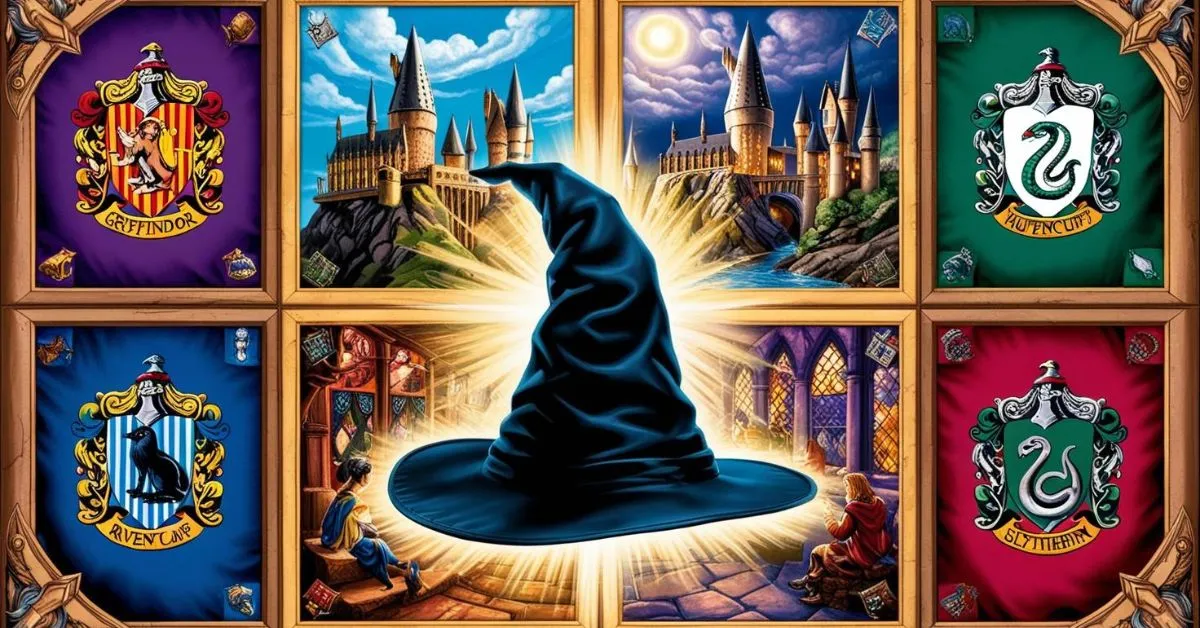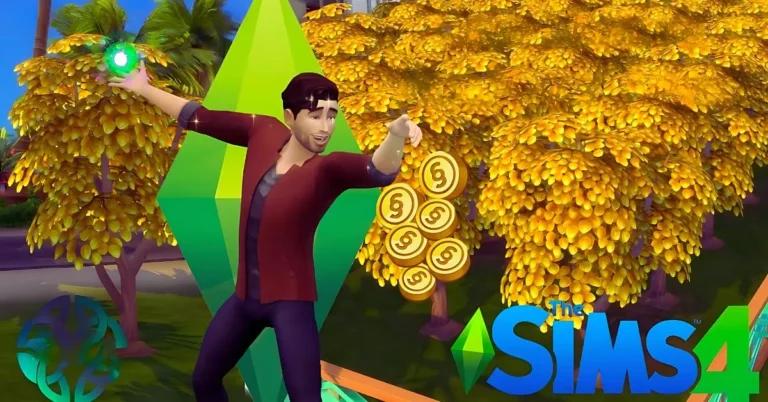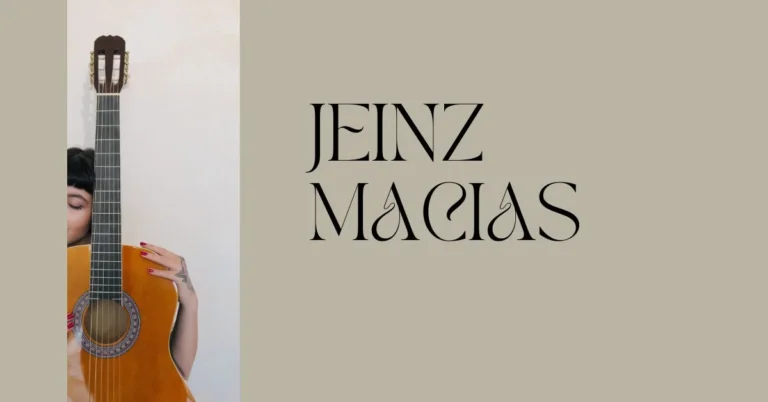Hogwarts Houses: Discover Hogwarts’ Magical Communities
Hogwarts School of Witchcraft and Wizardry, the famed school in J.K. Rowling’s Harry Potter series, is divided into four unique houses: Gryffindor, Hufflepuff, Ravenclaw, and Slytherin. Each house boasts its values, traits, and historical roots, creating a unique home for students throughout their magical education. This system provides a sense of community and a foundation for friendly competition in academics, sports, and moral challenges.
This article delves deep into the origins, characteristics, and modern fascination with these iconic houses, providing insight into what it means to belong to each house. From quizzes to exploring one’s place within Hogwarts to the Sorting Hat’s famous ceremony, Hogwarts’ houses remain a beloved part of the wizarding world experience.
The Origins and History of the Four Houses
The Founders and Their Vision
Each Hogwarts house was founded by one of the four founders of Hogwarts: Godric Gryffindor, Helga Hufflepuff, Rowena Ravenclaw, and Salazar Slytherin. These influential witches and wizards built their house philosophies around the qualities they valued most, hoping to shape young witches and wizards in line with their ideals:
- Gryffindor, founded by Godric Gryffindor, values bravery, courage, and chivalry.
- Hufflepuff, founded by Helga Hufflepuff, prizes hard work, loyalty, and fairness.
- Ravenclaw, founded by Rowena Ravenclaw, celebrates intelligence, creativity, and wisdom.
- Slytherin, founded by Salazar Slytherin, values ambition, cunning, and resourcefulness.
These founders sought students who would embody the ideals of each house. However, they realized that selecting students by hand would be impossible once they were gone. To solve this, Godric Gryffindor famously enchanted his hat, creating what we know today as the Sorting Hat, which now determines each student’s Hogwarts house.
The Sorting Hat Ceremony: A Timeless Tradition
The Sorting Hat Ceremony takes place every year in Hogwarts’ Great Hall. New students are called forward, one by one, and the hat is placed on their heads. The Sorting Hat, possessing a blend of intelligence and magic, “reads” each student’s mind and personality to select the most suitable house. It considers both innate qualities and personal preferences, as seen when Harry Potter requested not to be placed in Slytherin—a choice the hat honored by placing him in Gryffindor.
This magical hat symbolizes personal choice and identity within the magical community. Each year, the Sorting Hat performs a unique song introducing the four houses and occasionally offers insight or warnings about school unity and potential threats.
Exploring the Traits of Each House
Gryffindor: The House of the Brave
Students in Gryffindor are known for their courage and bravery. Often, they’re drawn to adventures, and their daring nature makes them natural leaders. Some famous Gryffindors include Harry Potter, Hermione Granger, Ron Weasley, and Albus Dumbledore. The house crest features a lion, symbolizing courage and strength, and its colors are red and gold.
- House Ghost: Nearly Headless Nick (Sir Nicholas de Mimsy-Porpington)
- Quidditch: Gryffindor’s Quidditch team has won the coveted House Cup multiple times, contributing to a long-standing rivalry with Slytherin.
- Values and Challenges: While Gryffindors are known for their bravery, they can sometimes act recklessly. Courage can be inspiring, but Gryffindors must also learn to balance it with thoughtfulness.
Hufflepuff: The House of the Loyal
Hufflepuff is known for its hardworking, fair, and loyal members. Helga Hufflepuff founded this house with some of the most steadfast and reliable characters, such as Cedric Diggory and Nymphadora Tonks. Represented by the badger, the house colors are yellow and black, symbolizing earthiness and loyalty.
- House Ghost: The Fat Friar, a friendly and sociable ghost who offers comfort and support to students.
- Common Room: Located near the kitchens, Hufflepuff’s common room is known for its cozy, welcoming atmosphere.
- Quidditch and Points: Although not always the most competitive, Hufflepuffs are known to support one another in both Quidditch and academics, reinforcing their value for loyalty.
Ravenclaw: The House of the Wise
Ravenclaw prides itself on intelligence, wit, and a love of learning. Students in this house are often drawn to knowledge and creativity, which are celebrated and encouraged. Famous Ravenclaws include Luna Lovegood and Cho Chang. The eagle represents the house, and its colors are blue and silver.
- House Ghost: The Grey Lady (Helena Ravenclaw), who often inspires curiosity and contemplation.
- Unique Traits: Ravenclaw students are encouraged to explore intellectual pursuits and develop creative thinking.
- Common Room and Challenges: Ravenclaw’s common room is only accessible to those who can solve a riddle. This emphasis on intelligence challenges students to stay sharp and think critically.
Slytherin: The House of the Ambitious
Slytherin is often known for its ambitious and resourceful members. Although the house sometimes has a reputation for being “dark,” it has produced great witches and wizards, such as Severus Snape and Tom Riddle (Voldemort). The serpent symbolizes the house, and its colors are green and silver.
- House Ghost: The Bloody Baron, who has a haunting presence but a storied past with Slytherin.
- Common Room: Located in the dungeons, the Slytherin common room has a cool, eerie atmosphere that fosters privacy and ambition.
- Strengths and Stereotypes: Slytherins are known for their ambition, which can sometimes lead to misunderstandings. Many Slytherins are strategic and thoughtful and value loyalty to their house.
The Modern Fascination: Sorting Quizzes and Personality Tests
The question “Which Hogwarts house do you belong to?” has sparked endless curiosity, leading to countless quizzes and personality tests. People are drawn to finding a Hogwarts house that resonates with their identity and values. Here’s a closer look at how these quizzes have brought the houses into everyday life.
Hogwarts House Quiz: A Gateway to Self-Discovery
A Hogwarts house quiz often asks participants to answer questions about their preferences, values, and goals. Questions may range from “How do you handle challenges?” to “What’s your favorite color?” Each question is designed to reflect the core values of each house.
What Hogwarts House Am I?
This classic question is the basis for a popular exploration of self-identity within the wizarding world. Participants can see which house matches their personality by answering questions. This type of test can be fun, engaging, and even insightful as it pushes people to consider their values.
Hogwarts House Test: Sorting Made Simple
The Hogwarts house test goes beyond a casual quiz by asking more thought-provoking questions. This in-depth approach often considers elements like moral choices, long-term goals, and how one handles interpersonal relationships. By taking the test, participants gain a more nuanced understanding of their personality, all through the lens of the Hogwarts houses.
Which House Am I? The Role of Personal Choice
Much like Harry Potter’s experience during the Sorting Hat ceremony, many people discover they feel drawn to more than one house. Some may resonate with the wisdom of Ravenclaw but admire Gryffindor’s bravery. The ability to choose or influence the house reflects the idea that people are complex and multifaceted.
Hogwarts House Dynamics and the Inter-House Rivalries
The Hogwarts houses function as communities within Hogwarts, providing a basis for friendly competition. Here’s how they foster school unity and spirit:
House Points System
Students earn points for their house throughout the school year based on academic performance, good behavior, and achievements. Points are lost for rule-breaking or poor behavior. The House Cup, awarded at the end of each year, is a prestigious trophy symbolizing each house’s achievements and unity.
Quidditch Rivalries
Hogwarts houses each have Quidditch teams competing for the Quidditch Cup. These competitions build camaraderie within the house while adding to the rivalry between Gryffindor and Slytherin.
Inter-House Support
Despite rivalries, the Hogwarts houses can also serve as support systems. During times of crisis, students and teachers set aside their differences to stand united for the greater good of Hogwarts, exemplifying the school motto: “Draco Dormiens Nunquam Titillandus” (Never tickle a sleeping dragon).
Why the House System Resonates Beyond Hogwarts
The concept of the Hogwarts houses has endured not just because of J.K. Rowling’s magical storytelling but because the qualities associated with each house resonate with real-world traits. From a sense of belonging to a structured system that celebrates diverse values, the Hogwarts houses inspire people to think about their identity, community, and what they stand for.
The fascination with Hogwarts houses shows no signs of fading. Each house appeals to fans through fantasy and provides a framework for self-reflection and personal growth. Hogwarts’ house system, designed initially as a fictional community structure, has evolved into something much more—an engaging way to explore one’s personality, values, and sense of belonging.
Conclusion
The four houses of Hogwarts have grown beyond the pages of Harry Potter, becoming an iconic symbol of personal values and identity. Whether a person identifies as brave like Gryffindor, loyal like Hufflepuff, wise like Ravenclaw, or ambitious like Slytherin, each house provides a unique path toward self-understanding and community. The timeless magic of Hogwarts lives on, inspiring fans and newcomers alike to ask themselves the captivating question: “What Hogwarts house am I?”







